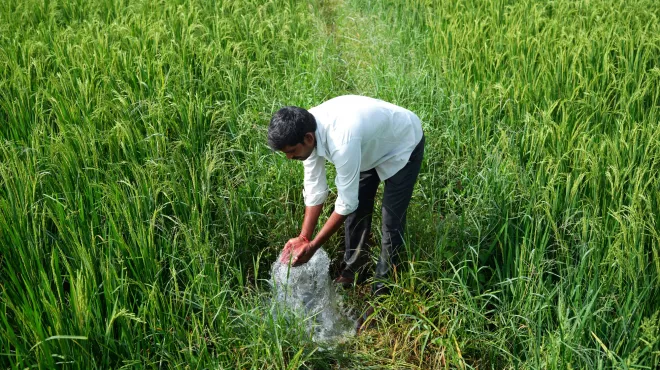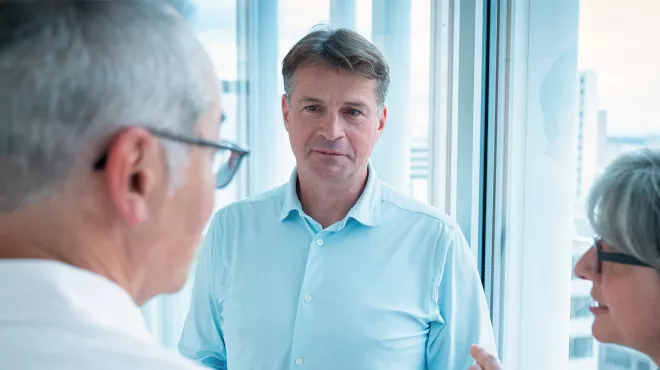As an expert in infectious diseases, Jennifer Leeds could see the storm brewing. When COVID-19 began to emerge – first in Asia, then in Europe – she could see that its relative ease transmitting from person to person, along with the lack of tests and preventions or treatments for infection, made the virus a credible threat to humanity. Knowing that a pandemic was likely coming made watching the crisis unfold no less heartbreaking. Fortunately, as a member of the Novartis Business Development & Licensing (BD&L) department, she was in a position to try to help.

After focusing on antimicrobial research for years, Leeds now heads a BD&L effort that builds relationships and collaborations with companies on the West Coast of the US and across all of Canada. She joined the Novartis COVID-19 R&D Task Force to help tackle the emerging pandemic, taking the reins of the business development workstream. The group evaluates opportunities to address the COVID-19 crisis through collaborations with external industry, academic and nonprofit organizations. In particular, Leeds and colleagues work on behalf of Novartis to engage with cross-organizational consortia, including the recently announced CARE project funded by the Innovative Medicines Initiative. The idea is to combine expertise and resources to thwart the pandemic.
Leeds recently shared an insider’s perspective on what goes into forming these consortia, and talked about what it’s been like to see her two professional areas of expertise unexpectedly converge.
When situations arise, you can dig into your long competencies and capabilities and get together as a group of passionate people and make things happen, even at a big company.
Jennifer Leeds, Head of West Coast Search and Evaluation, NIBR Business Development & Licensing
What factors do you weigh when deciding whether to join a consortium?
First, do we believe in the goals? We think about the mission of the individual consortium, and we also want to make sure that we are entering into multiple relationships with a variety of approaches towards the end goal.
It’s also important to understand who the other members in the consortium are. Are they organizations that are well-equipped to take on the problems that they are proposing to address? Do they have the right infrastructure and experience? And do we feel like we have the capability and competency to contribute to the mission?
Then we look at whether we complement what the others bring to the table – because you don’t want a lot of overlapping capabilities and technologies. You want everyone to come in with something slightly different so that the collective is much greater than the individual contributors.
Tell us more about CARE. What are the goals of the consortium and what will Novartis contribute?
CARE stands for Corona Accelerated R&D in Europe. It’s a coalition of globally renowned academic institutions, pharmaceutical companies and nonprofit research organizations. The short-term goal of CARE is to provide a quick emergency response to the pandemic by testing existing drugs that were designed to treat other diseases against COVID-19. And then the long-term goal of the project is to develop new therapies for the SARS-CoV-2 virus at the root of COVID-19, as well as other coronaviruses which could cause future pandemics.
Novartis has agreed to contribute a carefully curated library of about 1300 small molecules with antiviral activity to the CARE project. These will be screened against SARS-CoV-2. We are also supporting the consortium’s preclinical safety and pharmacokinetics workstreams.
And this is just one of our multistakeholder engagements. We’re also contributing to an industry-driven R&D Leaders Consortium, a Gates Foundation-led COVID-19 Therapeutics Accelerator, a public-private collaboration in the US called ACTIV, and a collaboration with the University of California, Berkeley, to identify pan-coronavirus inhibitors, among others.
How was consortia-building handled differently during the pandemic?
Because of the urgency of the situation, a group of scientists had to come together to help review proposals and give feedback rather quickly. We asked them to look at each consortium and, in just a day or two, say whether they thought Novartis could get involved and accomplish the established goals. And then we went back to the COVID-19 R&D Task Force with a recommendation and rationale. It was pretty much a small, efficient, rapidly moving team that was empowered to make decisions.
Did the pandemic change the company’s approach to forming consortia?
Novartis has a long history of collaborating with other organizations, but the pandemic has provided a real-time test of which features of consortia can be incredibly powerful and enabling, and which features can become quite cumbersome, with sticking points that put the groups at an impasse. The rapidity with which various consortium-led efforts have been formed in response to COVID-19 has helped show us what is truly mission-critical.
What lessons have you taken from this extraordinary experience?
A lesson I took from this experience was that your formal job title doesn’t limit how you can contribute to the company’s mission. My job description at the beginning of the year certainly didn’t include going back to my roots in infectious diseases and managing COVID-19 projects, but we all had to adapt. I guess that’s the true definition of situational leadership. When situations arise, you can dig into your long competencies and capabilities and get together as a group of passionate people and make things happen, even at a big company.
Main image from Adobe Stock by dottedyeti: 3D rendering of SARS-CoV-2, the virus that causes COVID-19.
Learn how Novartis is collaborating with other organizations to combat #COVID19.



